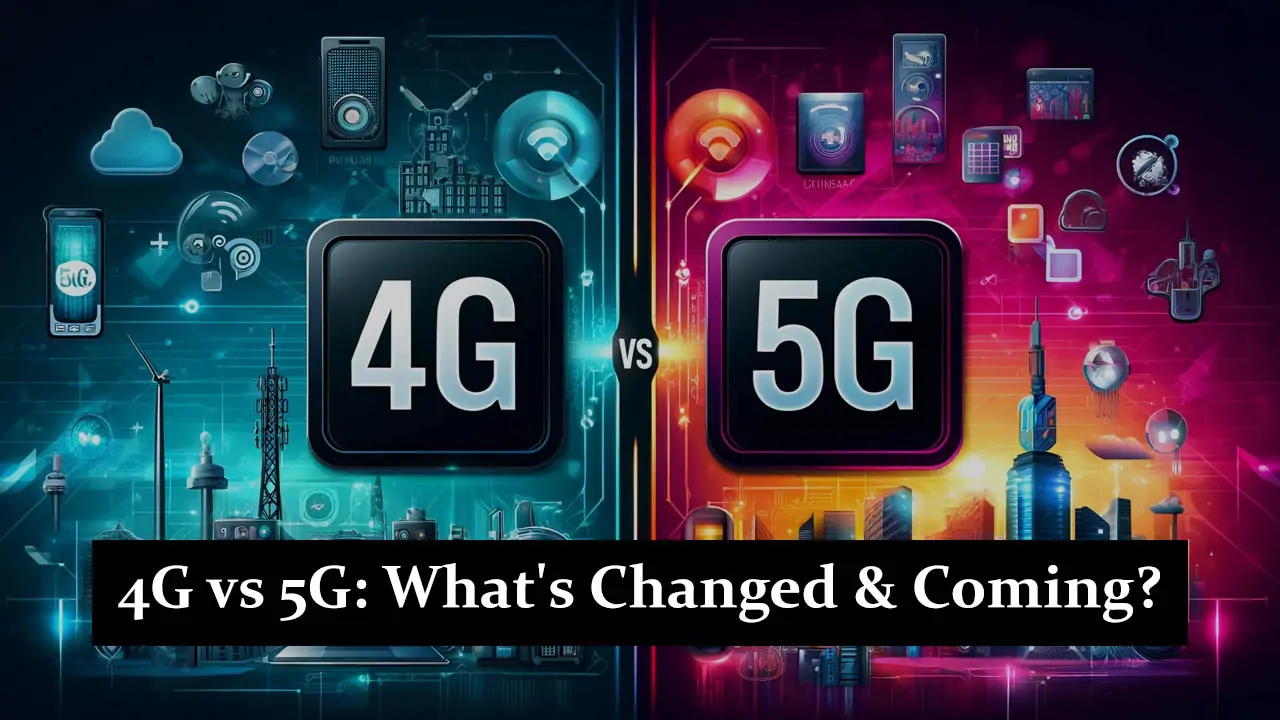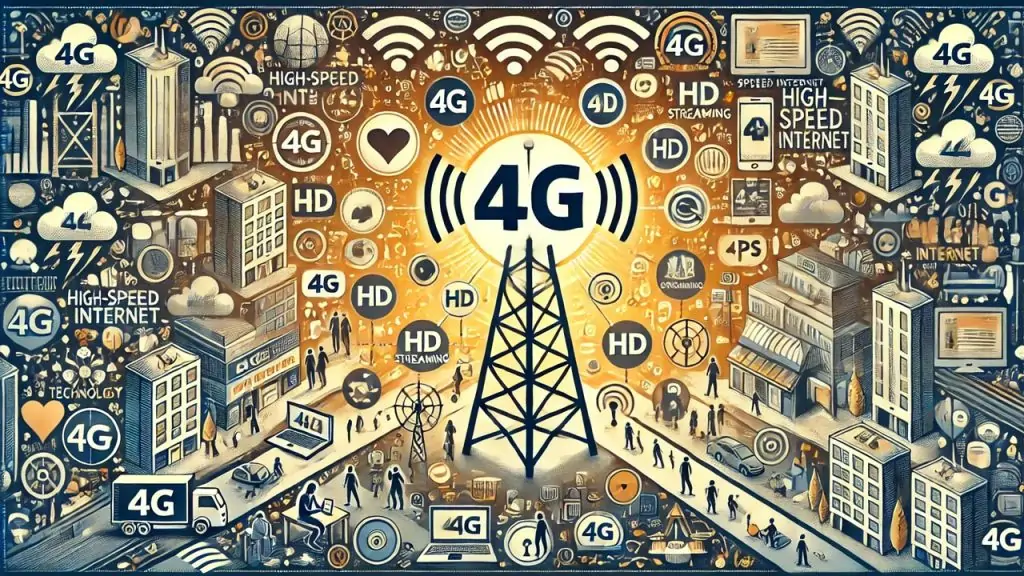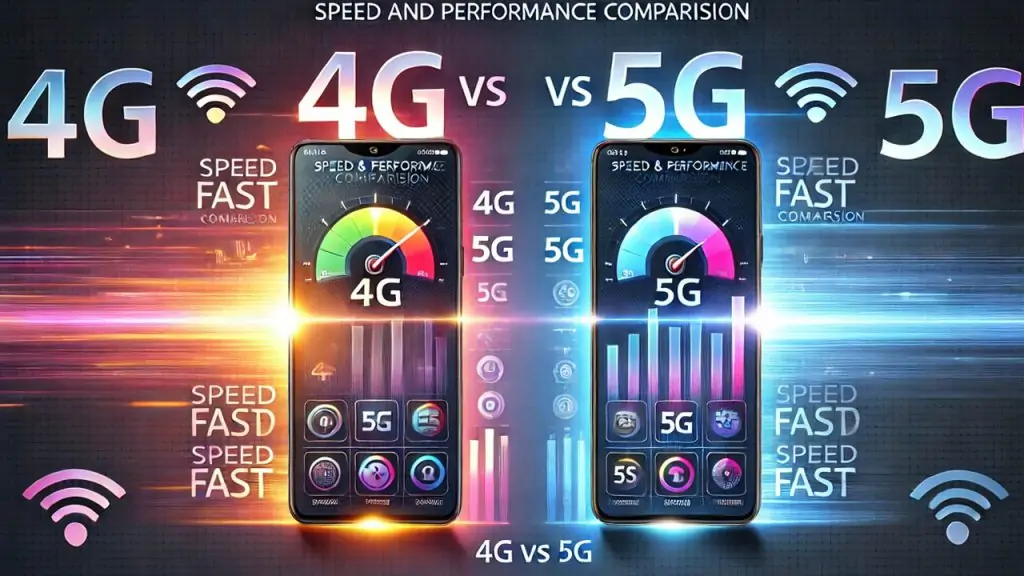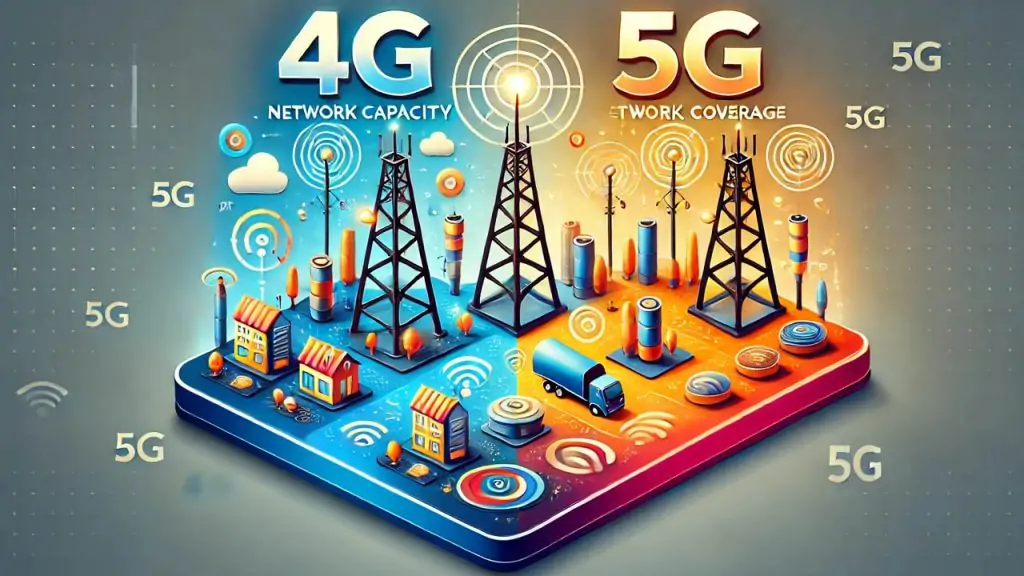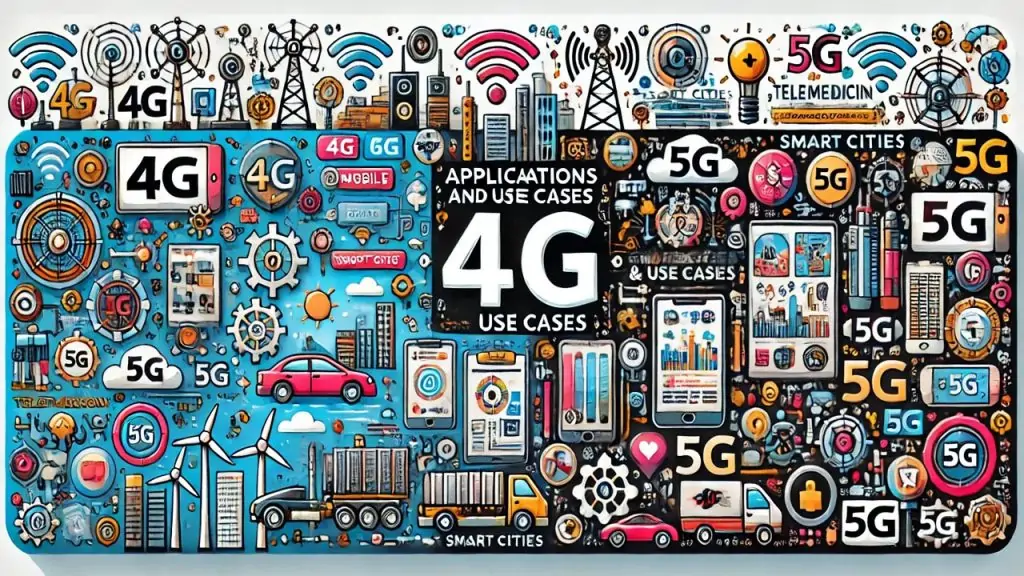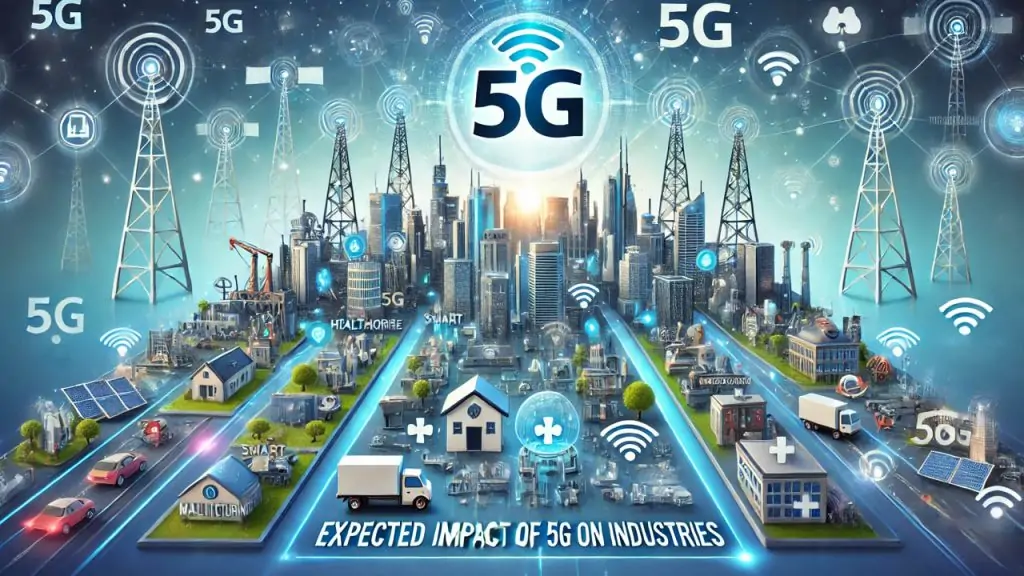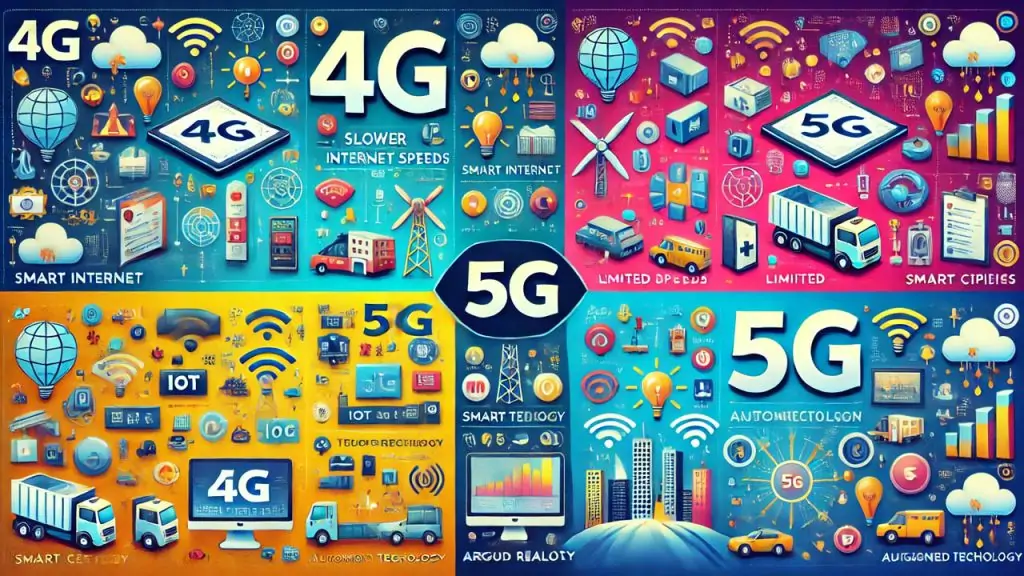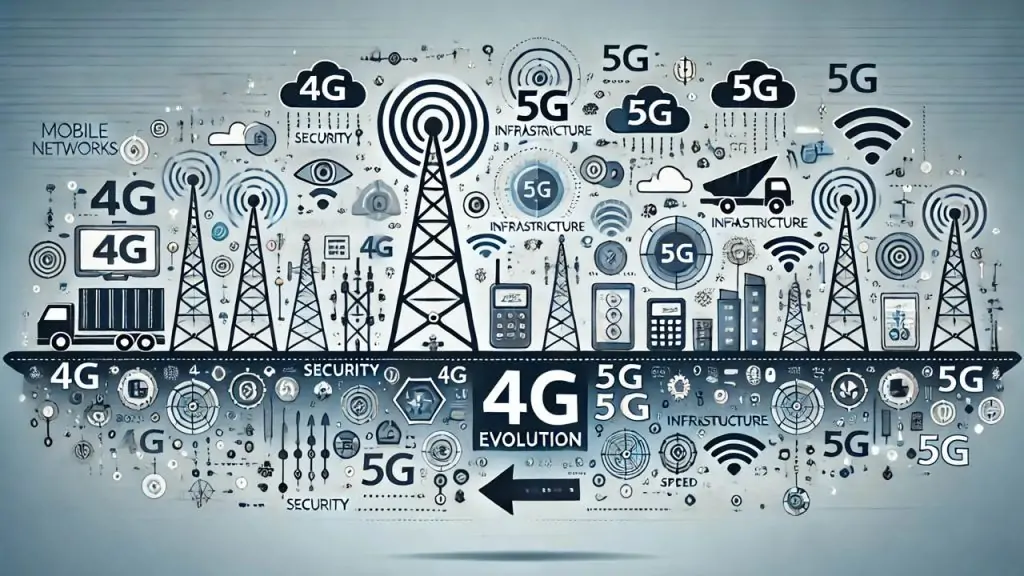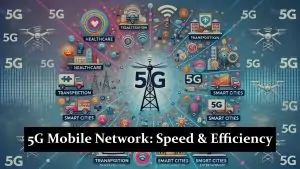The mobile network landscape has transformed dramatically over the years, evolving from the early days of 1G to the high-speed, high-capacity networks we have today. Understanding the differences between 4G vs 5G is crucial for appreciating the advancements in mobile technology and their impacts on various sectors.
Understanding 4G Technology
4G, or fourth-generation technology, is a standard for mobile communications that succeeded 3G. It provides faster internet speeds and better connectivity, supporting high-definition mobile TV, video conferencing, and other data-intensive applications.
History and Development
The journey to 4G began with the first-generation (1G) analog cellular networks, followed by the digital 2G networks, which introduced SMS and basic data services. The third generation (3G) improved data speeds and supported mobile internet. 4G marked a significant leap with enhanced data rates and improved network reliability.
Key Features of 4G
- Speed and Latency: 4G networks offer peak download speeds of up to 100 Mbps and lower latency than 3G, enhancing real-time applications.
- Coverage and Connectivity: 4G provides widespread coverage, ensuring robust connectivity even in remote areas.
- Applications and Use Cases: 4G supports various applications, including HD video streaming, online gaming, and IoT devices.
Current Status
Today, 4G is ubiquitous, serving as the backbone for many applications across various sectors, from entertainment to business solutions.
Introduction to 5G Technology
5G, or fifth-generation technology, is the latest standard in mobile communications. It promises faster speeds, lower latency, and the ability to connect many devices simultaneously.
Development and Deployment
The transition from 4G to 5G involves significant technological advancements and infrastructure upgrades. 5G is being rolled out globally, with increasing adoption in urban areas and expansion into rural regions.
Key Features of 5G
- Enhanced Speed and Reduced Latency: 5G networks offer speeds up to 10 Gbps and latency as low as 1 millisecond, supporting real-time applications.
- Massive Connectivity (IoT): 5G can connect up to a million devices per square kilometer, enabling the Internet of Things (IoT) on a large scale.
- Improved Reliability and Efficiency: 5G provides more reliable connections with higher energy efficiency.
Applications and Potential Use Cases
- Smart Cities: 5G enables the development of smart cities with interconnected systems for better urban management.
- Autonomous Vehicles: Real-time communication between vehicles and infrastructure supports the deployment of autonomous vehicles.
- Remote Healthcare: 5G facilitates telemedicine and remote surgery, enhancing healthcare delivery.
Speed and Performance Comparison
1. Detailed Comparison of 4G and 5G Speeds
- 4G offers peak speeds of up to 100 Mbps, while 5G can reach up to 10 Gbps, making it significantly faster.
2. Real-world Speed Tests and Benchmarks
- Studies show 5G achieving real-world speeds that far surpass 4G, especially in dense urban environments.
3. Latency Differences
- 5G’s latency is around 1 ms, compared to 4G’s 30-50 ms, greatly improving the responsiveness of applications.
4. Impact on User Experience
- Streaming Quality: 5G enhances video streaming with higher resolution and no buffering.
- Gaming Responsiveness: Lower latency in 5G improves online gaming experiences.
- Download and Upload Times: 5G significantly reduces download and upload times for large files.
Network Capacity and Coverage
1. Comparison of Network Capacity
- 5G can handle more devices and higher data traffic than 4G, supporting the growing number of connected devices.
2. Differences in Coverage
- While 4G has extensive coverage, 5G’s infrastructure is still growing, primarily covering urban areas initially.
3. Urban vs. Rural Deployment
- 4G offers broad coverage, including rural areas, while 5G deployment is focused on urban regions but is gradually expanding.
Technological Advancements
- Frequency Bands and Spectrum Usage: 4G primarily uses lower frequency bands, while 5G utilizes a broader range, including millimeter waves, for higher speeds.
- Infrastructure Differences: 5G relies on small cells for dense coverage, compared to the larger towers used by 4G.
- Advanced Technologies in 5G: Technologies like beamforming and network slicing enhance 5G’s efficiency and flexibility.
Applications and Use Cases
Current Applications of 4G
4G technology has significantly impacted our daily lives and business operations by providing high-speed internet and reliable connectivity.
- Everyday Mobile Internet Usage: 4G allows for seamless web browsing, video streaming, and social media access on the go.
- Mobile Apps and Services: It supports various mobile applications, including ride-hailing services, food delivery apps, and streaming platforms.
- Business and Enterprise Solutions: 4G facilitates mobile enterprise solutions, such as cloud-based applications, remote work tools, and customer relationship management (CRM) systems.
- IoT Devices: 4G enables the connection and operation of IoT devices such as smart home appliances, wearables, and meters.
Emerging Applications of 5G
5G technology introduces new possibilities with its enhanced speed, lower latency, and ability to connect numerous devices.
- Smart Homes and Cities: 5G enhances smart home devices and supports smart city initiatives like traffic management and energy efficiency.
- Industrial Automation: It enables real-time control of machines and robots, making manufacturing processes more efficient.
- Healthcare Advancements: 5G supports telemedicine, remote surgeries, and real-time patient monitoring, improving healthcare accessibility.
- Enhanced Mobile Broadband: Users experience ultra-high-definition video streaming, immersive AR/VR, and faster downloads.
- Critical Communications: 5G’s reliability is essential for emergency response and public safety, enabling real-time coordination.
- Transportation and Logistics: 5G aids in developing autonomous vehicles and real-time tracking, improving transport efficiency.
These concise applications demonstrate the transformative potential of 5G technology across various sectors, driving innovation and improving quality of life.
Impact on Industries and Daily Life
1. How 4G Transformed Various Industries
4G technology has had a profound impact on numerous industries, revolutionizing the way we live and work.
Entertainment and Media
- Streaming Services: 4G’s high-speed connectivity enabled the rise of streaming platforms like Netflix, Hulu, and YouTube, providing users with seamless access to high-definition content on the go.
- Social Media: Enhanced mobile internet speeds have fueled the growth of social media platforms, allowing for instant sharing of videos, photos, and live streams.
E-commerce and Financial Services
- Mobile Shopping: 4G has facilitated the growth of mobile commerce (m-commerce), enabling users to shop online easily and quickly.
- Mobile Banking: High-speed networks support secure and efficient mobile banking services, allowing users to perform transactions, access financial information, and use payment services conveniently.
Healthcare and Education
- Telemedicine: 4G connectivity has made telemedicine more accessible, allowing patients to consult with healthcare professionals remotely through video calls and online platforms.
- E-Learning: 4 G has benefited the education sector by enabling e-learning platforms, which provide students with access to online courses, resources, and interactive learning experiences.
2. Expected Impact of 5G on Industries
As 5G technology becomes more widespread, its impact on industries is expected to be even more transformative.
Manufacturing and Logistics
- Automation: 5G supports advanced automation technologies, allowing for real-time monitoring and control of manufacturing processes, leading to increased efficiency and reduced downtime.
- Supply Chain Management: Enhanced connectivity improves supply chain visibility and logistics management, enabling precise tracking of goods and optimizing delivery processes.
Healthcare and Telemedicine
- Remote Surgeries: With ultra-low latency, 5G enables remote surgeries, where specialists can perform procedures from a distance with real-time precision.
- Wearable Health Devices: 5G supports a wide range of connected health devices that monitor patients’ vital signs and provide real-time data to healthcare providers for timely interventions.
Retail and Immersive Experiences
- Augmented Reality (AR) and Virtual Reality (VR): 5G enhances AR and VR applications, providing immersive shopping experiences where customers can virtually try products before purchasing.
- Smart Retail: Retailers can leverage 5G to implement smart shelves, automated checkouts, and personalized shopping experiences based on real-time data analysis.
3. Daily Life Enhancements
Improved Mobile Internet Experience
- Faster Downloads and Uploads: 5G drastically reduces download and upload times, making it easier for users to access and share large files instantly.
- Enhanced Streaming Quality: With higher speeds and lower latency, 5G ensures smooth streaming of 4K and even 8K videos without buffering.
Smart Homes and Cities
- Connected Home Devices: 5G enables seamless connectivity for smart home devices, from thermostats and security systems to appliances and lighting, allowing for better home automation and energy management.
- Smart City Infrastructure: Cities can implement smart infrastructure solutions, such as intelligent traffic management, smart lighting, and waste management systems, improving urban living conditions and sustainability.
Gaming and Virtual Experiences
- Cloud Gaming: 5G supports cloud gaming platforms, allowing users to play high-quality games on any device without expensive hardware.
- Virtual Reality: The low latency and high bandwidth of 5G provide a more immersive and responsive VR experience, enhancing gaming, virtual tours, and training simulations.
Transportation and Autonomous Vehicles
- Connected Vehicles: 5G facilitates vehicle-to-everything (V2X) communication, enabling cars to communicate with each other, traffic signals, and infrastructure, improving road safety and traffic flow.
- Autonomous Driving: 5 G’s high reliability and low latency are critical for developing and deploying autonomous vehicles, which rely on real-time data to navigate safely.
Challenges and Considerations in Mobile Network Evolution
Challenges During the 4G Rollout
- Infrastructure Costs: Deploying 4G required significant investment in new cell towers and base stations, which was both expensive and time-consuming.
- Spectrum Allocation: Securing the necessary spectrum for 4G involved complex negotiations and auctions with regulatory bodies.
- Technological Integration: Ensuring seamless handovers between 3G and 4G networks required advanced technology and careful planning.
- Device Compatibility: Early on, there were limited 4G-compatible devices, necessitating new developments by manufacturers.
- Regulatory and Security Concerns: Evolving regulatory frameworks and ensuring network security were significant challenges.
Current Challenges in 5G Deployment
- Infrastructure Costs: The need for a denser network of small cells increases the 5G infrastructure development cost.
- Regulatory and Security Concerns: Securing spectrum licenses and addressing heightened security concerns are major hurdles.
- Public Perception and Adoption: Misinformation and health concerns affect public perception and acceptance of 5G.
- Technological Challenges: Implementing advanced technologies like beamforming and network slicing requires new network management approaches.
- Device Ecosystem: The availability of affordable 5G devices is still growing and needs to catch up with 4G.
- Interoperability and Standards: Ensuring interoperability and adhering to common standards requires industry collaboration.
Conclusion
The evolution from 4G to 5G marks a significant technological leap, enhancing connectivity and transforming various sectors. 4G improved speed, latency, and reliability supporting high-definition video streaming, mobile internet, and IoT applications, and is critical to our communication infrastructure. 5G promises even greater advancements with enhanced speed, reduced latency, and massive connectivity capabilities, revolutionizing industries such as smart cities, autonomous vehicles, and remote healthcare. The real-world benefits of 5G include better streaming quality, improved gaming responsiveness, and faster download and upload times.
